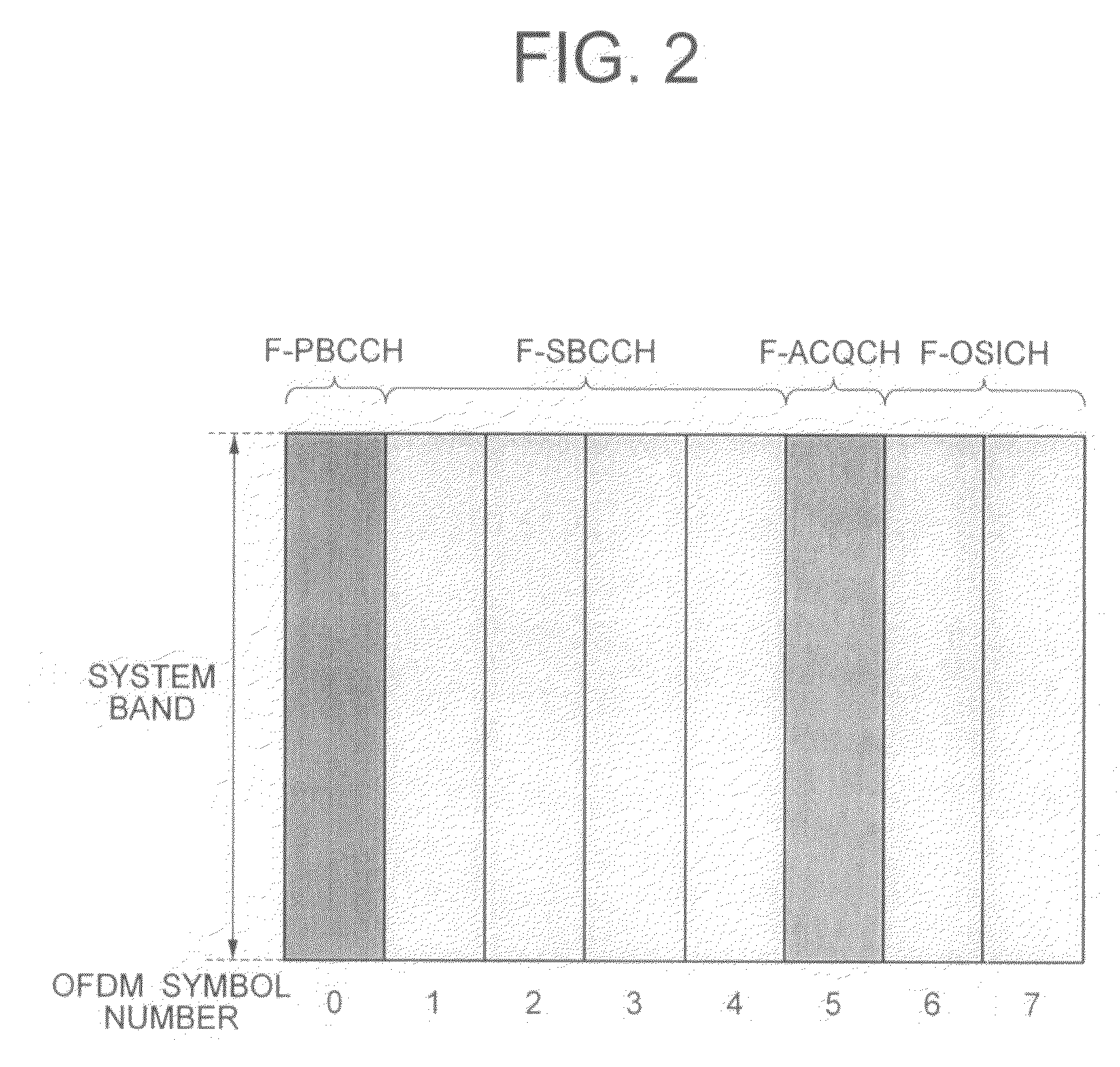Wireless communication system and terminal
a terminal and communication system technology, applied in the field of wireless communication methods, can solve the problems of not always performing desired operations, and achieve the effect of improving the followability of terminal transmission power and suppressing variable terminal transmission power
- Summary
- Abstract
- Description
- Claims
- Application Information
AI Technical Summary
Benefits of technology
Problems solved by technology
Method used
Image
Examples
first embodiment
[0050]A first embodiment of the present invention will be described below with reference to FIG. 1 to FIG. 9.
[0051]In general, an OFDM cellular wireless communication system comprises multiple base station devices and multiple terminal devices as shown in FIG. 1. Base station devices 101 and 102 are connected to a network 103 via a wired line. A terminal device 104 is connected wirelessly to the base station device 101 for communication with the network 103.
[0052]Each sector in an OFDM cellular base station receives signals from a terminal that is communicating with the sector itself, interference signals from terminals that are communicating with other sectors, and thermal noises.
[0053]The base station device of each sector measures the interference power and the thermal noise power and calculates the ratio between those powers as the IoT of the sector.
[0054]Based on the calculated IoT, each sector judges the intensity of received interference at one of three levels of OSI, that is...
second embodiment
[0097]A second embodiment of the present invention will be described with reference to FIG. 10 to FIG. 13.
[0098]The second embodiment is similar to the first embodiment in the device configuration of a base station device 101, a base station device 102, and a terminal device 104 but is different in the programs that run internally.
[0099]FIG. 10 is a sequence diagram showing the communication procedure in the second embodiment of the present invention.
[0100]The base station device 102 regularly decides an OSI (procedure 1001) and notifies the decided OSI to the terminal (procedure 1002) via the preamble. The detail of procedure 1001 is similar to that of procedure 701 in the first embodiment.
[0101]When the preamble is received from RLSS and each sector included in OSIMonitorSet, the terminal device 104 updates the T2P gain base value (procedure 1003) and sends it to the base station device 101 of RLSS via R-ODCH (Procedure 1004).
[0102]The following describes procedure 1003 more in de...
PUM
 Login to View More
Login to View More Abstract
Description
Claims
Application Information
 Login to View More
Login to View More - R&D
- Intellectual Property
- Life Sciences
- Materials
- Tech Scout
- Unparalleled Data Quality
- Higher Quality Content
- 60% Fewer Hallucinations
Browse by: Latest US Patents, China's latest patents, Technical Efficacy Thesaurus, Application Domain, Technology Topic, Popular Technical Reports.
© 2025 PatSnap. All rights reserved.Legal|Privacy policy|Modern Slavery Act Transparency Statement|Sitemap|About US| Contact US: help@patsnap.com



